Do you have a question about the Raypak MVB 1504A and is the answer not in the manual?
Clarifies DANGER, WARNING, CAUTION, and NOTE terms used in the manual.
Covers gas, electrical, water safety, and California Proposition 65 warnings.
Instructions for checking and identifying the heater model and serial number.
Lists standards, certifications, and considerations for high-altitude installations.
Illustrates component placement from side, front, rear, and top views.
Provides key specifications and data for various heater models.
Discusses risks of hot water over 125°F and recommended temperature settings.
Details the relationship between water temperature and burn time.
Lists applicable national, state, and local codes for installation.
Covers base requirements and indoor installation clearances.
Provides required clearances for outdoor installations.
Details air supply needs for proper combustion and ventilation.
Specifies required distances for vent and air inlet terminations.
Discusses air filter, direct vent, TruSeal, and conventional air supply.
Covers general piping, relief valve discharge, and pipe sizing.
Instructions for gauge installation and hydrostatic system testing.
Advisories on system cleaning and cold water startup procedures.
Explains methods for handling cold water startups and bypass systems.
Details for continuous cold water applications and bypass adjustment.
Guidance on pump sizing, feedwater regulator installation, and piping.
General piping recommendations and system flow advice.
Discusses air-separation, expansion tanks, valves, and Mode 1 configurations.
Details for Mode 2 (System Loop) and Mode 3 (Boiler Loop) DHW.
Specific considerations for domestic hot water applications.
Data on flow rates based on water hardness.
Guidelines for combined potable water and space heating use.
Specifics for pool heating installations and pump interlocks.
Procedure for shutting down the heater in freezing climates.
Importance of water balance and chemical impact on the heater.
Recommended water balance levels for pools and spas.
Usage guidelines for automatic chemical treatment systems.
Requirements for gas connection, piping, and pressure.
Tables for maximum equivalent pipe length and manifold gas pressure.
Electrical installation standards and pump power wiring.
Instructions for wiring and checking the power source.
Step-by-step guide for making electrical connections.
Importance of proper wiring location and grounding.
Instructions for connecting enable/disable functions and outdoor sensors.
Connecting indirect DHW sensors and optional control signals.
Instructions for connecting multiple boilers in a cascade system.
Connecting pumps and sensors for cascade systems.
Wiring for follower boilers, alarms, and venting categories.
Classifications of venting systems based on pressure and condensate.
Summary table of venting category requirements.
Guidelines for vent stack support and terminal placement.
Interlocking requirements for venting accessories.
Specific vent termination rules for Canada.
Vent termination requirements according to U.S. codes.
Diagrams illustrating different vent cap configurations.
Specific vent termination rules for Canada.
General installation guidance for Category I vertical venting.
Tips for vent support, inspection, and configurations.
Specification table for Category I vertical venting.
Illustration of a typical vertical venting setup.
Guidelines for systems that share a common chimney.
Inspection procedures and types of engineered venting systems.
Table showing flue product volume for different models.
Installation steps and length limitations for horizontal venting.
Specification table for Category III horizontal and direct venting.
Requirements for direct vertical venting installation and termination.
Specific instructions and precautions for outdoor unit installations.
How to enable and operate the freeze protection feature.
Explanation of ignition module operation, pre-purge, and lockout.
Description of the fixed and optional manual reset high limit.
Details on high limits, flow switch, low water cut-off, and gas pressure switches.
Function of blocked vent switch and user interface buttons.
How to adjust setpoints and navigate menus for initial adjustment.
List of adjustable parameters, ranges, and default settings.
List of boiler status, temperature, and software information.
List of logged operational data including run times and temperatures.
Accessing error codes, history, and toolbox functions.
Explanation of temperature control based on outdoor temperature.
Details on Boil START, OUT START, Boil DESIGN, and Reset Ratio settings.
Diagram illustrating the relationship for reset ratio calculation.
Comprehensive wiring diagram for models 504A-2004A.
Initial checks including system filling, air purging, and venting inspection.
Essential safety steps, including smell test and gas leak prevention.
List of tools needed for the initial startup process.
Verifying electrical supply voltage and gas supply pressure.
Step-by-step guide for igniting the burner and initial operation.
Verifying blower operation, manifold pressure, and using the user test function.
Detailed checklist for safety inspections of controls and operation.
Method for testing the gas valve for leaks using pressure points.
Confirming successful startup and testing safety controls.
Step-by-step guide for lighting the heater burner.
Procedure for safely shutting off the gas supply to the appliance.
Introduction to the troubleshooting section and error codes.
Table listing error items, descriptions, and troubleshooting steps.
List of error codes indicated by PIM LED lights and troubleshooting.
Overview of recommended daily, monthly, and yearly maintenance tasks.
Details annual service and breakdown by maintenance frequency.
Instructions for inspecting and replacing the air filter.
List of common household and industrial products affecting air quality.
Locations where contaminated combustion air commonly exists.
Specific installation rules for MA, including CO detectors and signage.
Massachusetts requirements for gas pressure monitoring.
Checklist items related to gas supply data.
Checklist items for clearances and electrical connections.
Checklist items for visual component inspection and venting.
Checklist items for emissions settings and test information.
General warranty terms and specific warranty for heat exchangers.
Warranty for other parts and conditions that void the warranty.
Process for replacing parts and making a warranty claim.
Legal disclaimers, limitations of liability, and owner rights.
Clarifies DANGER, WARNING, CAUTION, and NOTE terms used in the manual.
Covers gas, electrical, water safety, and California Proposition 65 warnings.
Instructions for checking and identifying the heater model and serial number.
Lists standards, certifications, and considerations for high-altitude installations.
Illustrates component placement from side, front, rear, and top views.
Provides key specifications and data for various heater models.
Discusses risks of hot water over 125°F and recommended temperature settings.
Details the relationship between water temperature and burn time.
Lists applicable national, state, and local codes for installation.
Covers base requirements and indoor installation clearances.
Provides required clearances for outdoor installations.
Details air supply needs for proper combustion and ventilation.
Specifies required distances for vent and air inlet terminations.
Discusses air filter, direct vent, TruSeal, and conventional air supply.
Covers general piping, relief valve discharge, and pipe sizing.
Instructions for gauge installation and hydrostatic system testing.
Advisories on system cleaning and cold water startup procedures.
Explains methods for handling cold water startups and bypass systems.
Details for continuous cold water applications and bypass adjustment.
Guidance on pump sizing, feedwater regulator installation, and piping.
General piping recommendations and system flow advice.
Discusses air-separation, expansion tanks, valves, and Mode 1 configurations.
Details for Mode 2 (System Loop) and Mode 3 (Boiler Loop) DHW.
Specific considerations for domestic hot water applications.
Data on flow rates based on water hardness.
Guidelines for combined potable water and space heating use.
Specifics for pool heating installations and pump interlocks.
Procedure for shutting down the heater in freezing climates.
Importance of water balance and chemical impact on the heater.
Recommended water balance levels for pools and spas.
Usage guidelines for automatic chemical treatment systems.
Requirements for gas connection, piping, and pressure.
Tables for maximum equivalent pipe length and manifold gas pressure.
Electrical installation standards and pump power wiring.
Instructions for wiring and checking the power source.
Step-by-step guide for making electrical connections.
Importance of proper wiring location and grounding.
Instructions for connecting enable/disable functions and outdoor sensors.
Connecting indirect DHW sensors and optional control signals.
Instructions for connecting multiple boilers in a cascade system.
Connecting pumps and sensors for cascade systems.
Wiring for follower boilers, alarms, and venting categories.
Classifications of venting systems based on pressure and condensate.
Summary table of venting category requirements.
Guidelines for vent stack support and terminal placement.
Interlocking requirements for venting accessories.
Specific vent termination rules for Canada.
Vent termination requirements according to U.S. codes.
Diagrams illustrating different vent cap configurations.
Specific vent termination rules for Canada.
General installation guidance for Category I vertical venting.
Tips for vent support, inspection, and configurations.
Specification table for Category I vertical venting.
Illustration of a typical vertical venting setup.
Guidelines for systems that share a common chimney.
Inspection procedures and types of engineered venting systems.
Table showing flue product volume for different models.
Installation steps and length limitations for horizontal venting.
Specification table for Category III horizontal and direct venting.
Requirements for direct vertical venting installation and termination.
Specific instructions and precautions for outdoor unit installations.
How to enable and operate the freeze protection feature.
Explanation of ignition module operation, pre-purge, and lockout.
Description of the fixed and optional manual reset high limit.
Details on high limits, flow switch, low water cut-off, and gas pressure switches.
Function of blocked vent switch and user interface buttons.
How to adjust setpoints and navigate menus for initial adjustment.
List of adjustable parameters, ranges, and default settings.
List of boiler status, temperature, and software information.
List of logged operational data including run times and temperatures.
Accessing error codes, history, and toolbox functions.
Explanation of temperature control based on outdoor temperature.
Details on Boil START, OUT START, Boil DESIGN, and Reset Ratio settings.
Diagram illustrating the relationship for reset ratio calculation.
Comprehensive wiring diagram for models 504A-2004A.
Initial checks including system filling, air purging, and venting inspection.
Essential safety steps, including smell test and gas leak prevention.
List of tools needed for the initial startup process.
Verifying electrical supply voltage and gas supply pressure.
Step-by-step guide for igniting the burner and initial operation.
Verifying blower operation, manifold pressure, and using the user test function.
Detailed checklist for safety inspections of controls and operation.
Method for testing the gas valve for leaks using pressure points.
Confirming successful startup and testing safety controls.
Step-by-step guide for lighting the heater burner.
Procedure for safely shutting off the gas supply to the appliance.
Introduction to the troubleshooting section and error codes.
Table listing error items, descriptions, and troubleshooting steps.
List of error codes indicated by PIM LED lights and troubleshooting.
Overview of recommended daily, monthly, and yearly maintenance tasks.
Details annual service and breakdown by maintenance frequency.
Instructions for inspecting and replacing the air filter.
List of common household and industrial products affecting air quality.
Locations where contaminated combustion air commonly exists.
Specific installation rules for MA, including CO detectors and signage.
Massachusetts requirements for gas pressure monitoring.
Checklist items related to gas supply data.
Checklist items for clearances and electrical connections.
Checklist items for visual component inspection and venting.
Checklist items for emissions settings and test information.
General warranty terms and specific warranty for heat exchangers.
Warranty for other parts and conditions that void the warranty.
Process for replacing parts and making a warranty claim.
Legal disclaimers, limitations of liability, and owner rights.
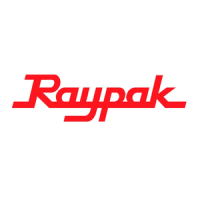
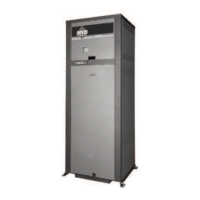


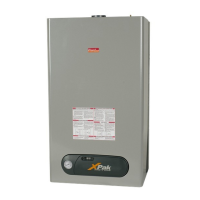
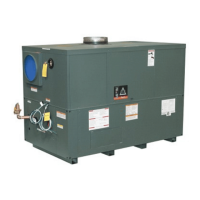


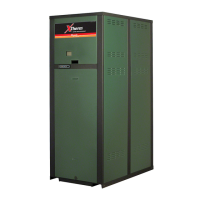
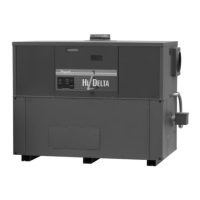
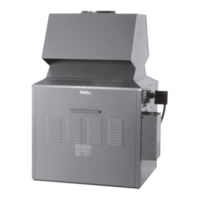

